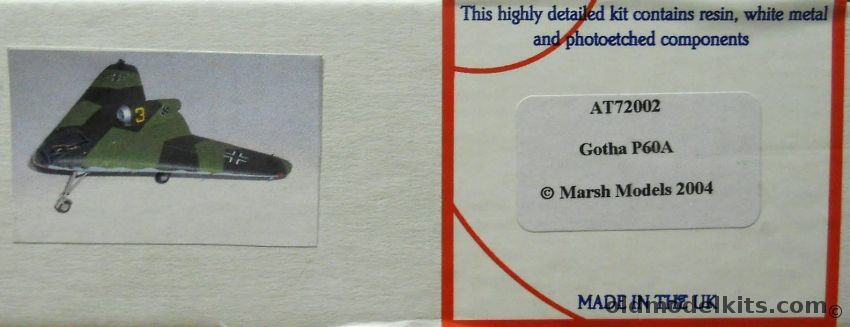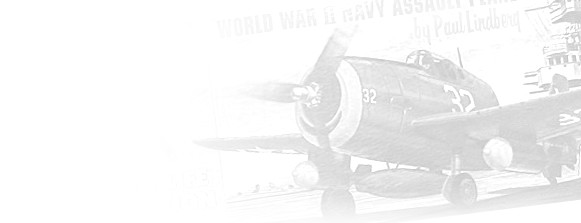
1/72 AT72002 Aerotech Gotha P60A - P.60 - By March Models
Resin Model Kit, Box Condition: Sealed Exc
Still factory sealed and the only model kit that I can find of this subject. This is a quality model molded in high-definition resin with 50 photoetched parts, 12 white metal parts, two clear parts and decals for multiple aircraft. The Historical Background by Dan Johnson of Luft 46 website: During August 1944 the Gotha Aircraft Company took over the job of series production of the Horten brothers' Ho IX all-wing fighter, which would be known as the Horten Ho 229. On receiving the design data, Gotha engineers found some areas for improvement. The Ho 229 had limited space for installing new equipment or adding more crew members. More importantly, since the engines were to be enclosed in the wing, different engines could not be fitted without extensive aerodynamic testing, which was not possible time-wise considering the worsening war situation for Germany. The Gotha designers proposed an alternate all-wing design to the RLM in January 1945 which used many of the construction techniques as in the Horten aircraft but had the advantage of being able to be modified with new equipment and engines without changing the flying characteristics greatly. The basic construction was to be a welded steel tube frame covered by plywood and "Formholz", a moulded and formed wood sheathing. The Gotha Go P.60A was a flying wing that was powered by two turbojet engines near the rear of the wing centre section, one above the wing and one below. The advantage was this arrangement allowed any jet engine to be fitted, plus maintenance would be easier due to accessibility with the engines in the exposed nacelles. In the designed Go P.60A, two BMW 003A-1 with 800 kp (1763 lbs) of thrust were to be used at first. Three fuel tanks were enclosed within the wings, one 1200 litre (317 gallon) tank in each outer wing panel and one 1200 litre (317 gallon) tank behind the cockpit. The pressurized and armored cockpit, located in the extreme nose, held two men who were in a prone (lying down) position. The prone position had the advantage of allowing the crew to withstand G-forces better, and was researched in the Berlin B9 test aircraft. This system was also used in the DFS 228 high altitude reconnaissance aircraft and the Henschel Hs 132 jet powered dive bomber. The main landing gear legs retracted to the front and rotated 90 degrees to lay flat. The nose gear was offset to the port side and retracted to the rear. To cure stall during landing, the wing leading edge was fitted with hydraulically activated split flaps. There were also a pair of conventional split flaps mounted at the rear which were installed with a 15 degree forward sweep and also could be used as air brakes. The other three types of control were: *Elevators/Elevons - located in the inner trailing edge of the wing and were provided with auxiliary trim tabs*Ailerons - located in the outer trailing edge of the wing and had internally balanced control flaps*Drag Rudders - located in the wing tips at a 18 degree angle (to the aircraft centre line), they were designed to be used during high speed manoeuvres. Armament was to be four MK 108 30mm machine cannon (150 rounds inner cannon, 175 rounds outer cannon) for the Höhenjäger (High Altitude Fighter) version, two MK 103 30mm machine cannon (175 rounds per gun) for the Zerstörer (Heavy Fighter) version and two MK 108 30mm machine cannon and two RB 50/18 cameras for the Aufklärer (Reconnaissance) version. The Höhenjäger (High Altitude Fighter) version could also to be fitted with a Walter HWK 509B rocket engine to increase the ceiling and climb rate, and was thus designated the Gotha Go P.60A/R. One of the main criticisms of the Go P.60A was the difficulty for the crew to escape while in flight. One solution was to mount both jet engines below the wing, and this proposed version was to be known as the Go P.60A-2. Unfortunately, this configuration reduced the roll rate in combat and was eliminated. Although further versions were to have some sort of ejection device for the crew, the war's end prevented the completion of the Gotha Go P.60A.
This item has been sold.
Click here to return to the main page.
